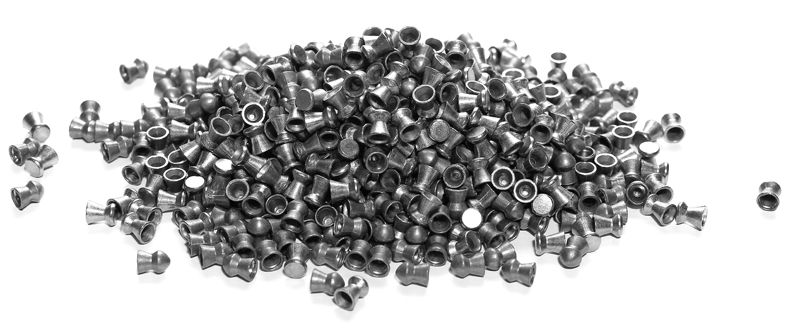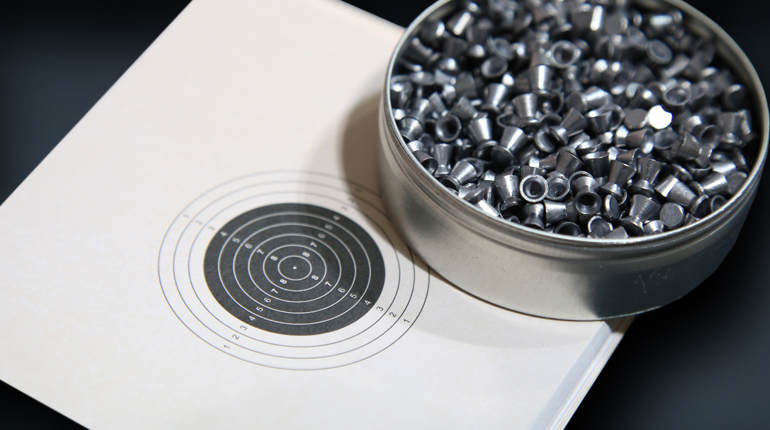How to Choose the Perfect Airgun Pellets
How to Choose the Perfect Airgun Pellets? Airguns can be picky about pellets and perform much better with certain types and different brands. We can offer some tips on finding the right ammo for your airguns.
Having the perfect airgun pellets for your particular gun can make the difference between hit and miss. So let’s take a look at a few things to keep in mind when shopping for new pellets or even pellets for your new air rifle. This article looks at pellets for your air rifles but not air pistols, as that will be covered in a separate blog post. We will cover everything: DOMED (Target, Hunting), FLAT (Target, Competition), POINTED (Hunting) and HOLLOWPOINT (Hunting).
Perfect Airgun Pellets for Different Purposes
There is a dazzling array of pellets on the market, all for different disciplines. They range from pointed tips to hollow points to flat ones. But the one you’re most likely to see is the pellet designed for general use, which has a round head.
The general use round head pellet cuts through the air more efficiently than the other shapes of pellets. This means it loses less energy mid-flight, is less likely to be blown off course by side winds and flies to the target quicker than any other type of pellet. If you want the technical term, it’s said to have a greater ballistic coefficient (BC).
Pointed pellets are designed for hunting but need to be handled gently as they can often have their fragile points can be damaged in transit which causes them to be inaccurate. The belief that pointed pellets penetrate deeper than domed designs is something of a myth. Testing suggests that there is usually little difference between the two shapes when it comes to penetration and that domed pellets actually often travel further through bone and tissue.
Accuracy is the single most important consideration when choosing an airgun pellet for pest control because you will need to hit your quarry in the head to ensure a clean kill. Domed pellets almost always win in this department — hence their popularity with serious target shooters. Pointed pellets are easily damaged, and accuracy goes out of the window when their points are knocked off centre.
Hollow-point pellets are designed to work like dum-dum bullets and spread on impact to deliver more force to the quarry. Like flat head pellets, these are best used at close quarters, such as rat shooting, because of their poor BC.

What are the calibres of air rifle pellets?
Air rifle pellets come in two main calibres (sizes): .177 and .22, with .177 being the smallest and .22 being the larger. There are also a few other calibre pellets, but they are rather specialist, and the guns are not readily available in the UK.
.22 or .177 Calibre?
The .22 used to be considered the best option for hunting because it ensured a clean kill due to its energy. However, nowadays, the smaller .177 calibre is more popular for sub-12ft/lbs air rifles. This is because it doesn’t impart as much energy to the quarry as it is smaller and lighter, but if the animal is hit in the right place, such as the head, it will be killed cleanly.
Perfect Air Gun Pellets for Target Shooting?
If you’re in a match, the .177 is the pellet to use. Target pellets often have flat heads and are called wad-cutters because they punch a neat hole in the paper target, which makes scoring easier.
What About Pellet Weight?
Airgun pellets come in a variety of weights. A general rule is that low-powered airguns should use lighter pellets, and high-powered ones should use heavier pellets. Put a heavy pellet in a low-powered airgun, and you will get a trajectory that arcs like a rainbow. For most legal limit airguns (those under 12ft/lbs.), pellets of seven to eight grains are good for .177 and 14 to 16 grains in .22.
What About Prices of Pellets?
More expensive pellets can be of a higher quality than cheaper ones, but it doesn’t mean they will perform better in your rifle when it comes to making a shot.
Top Airgun Pellet Tips
- Always look after your pellets by keeping them in a sturdy container lined with soft material, such as foam, because damaged pellets cause inaccuracy.
- When testing pellets, shoot off a bag or a bipod. This removes the human factor of rifle wobble and gives the pellets a level playing field.
- Pointed hunting pellets often don’t work as well as you might think because the tips of the pellets get damaged in transit, causing inaccuracy.
Don’t let finding the perfect airgun pellets become an obsession that stops you from perfecting your shooting technique. True, the right pellet for your airgun can make all the difference, but even if you choose the right pellet, a poor shooting technique will make you miss your target all the same.
Spring-Powered Air Rifles and Pellets
- Most spring-powered air rifles work more efficiently with lightweight pellets, as do CO2 rifles, while PCP air rifles are more efficient with a heavy pellet.
- These rules apply to diablo-shaped lead pellets, but there are now pellets on the market of more advanced and aerodynamic design that will give efficient results in most air rifle barrels with regard to bore size, type and direction, the pitch of rifling and whether or not the barrel is choked at the muzzle.
- As a general rule of thumb, in spring-powered rifles, the head of the pellet should be the same size as the bore or land size, and the skirt diameter should be the same size as the groove diameter of the barrel.

